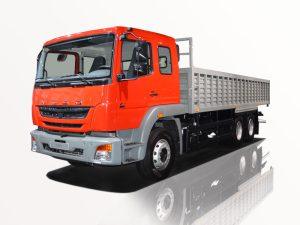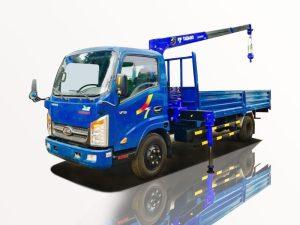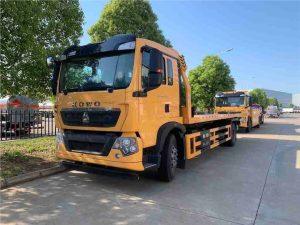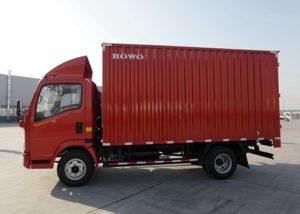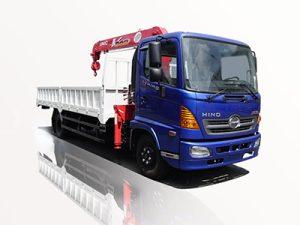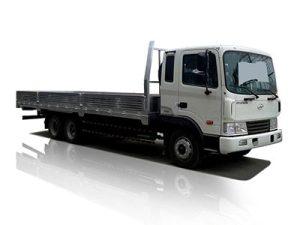Monday to Saturday - 8:00 -17:30
Understanding Water Tanker Trucks: A Complete Guide
Introduction to Water Tanker Trucks
Water tanker trucks are essential vehicles designed to transport water for various applications, ranging from municipal water supply to agriculture, construction, and fire-fighting services. These trucks come in various sizes and designs, allowing them to meet the diverse needs of different industries. This article aims to dive deeper into the functionalities, types, maintenance tips, regulations, and benefits of water tanker trucks, providing a comprehensive overview of their importance in modern society.
What is a Water Tanker Truck?
A water tanker truck is a specialized vehicle equipped with a tank to carry liquid water. The tanks vary in size, often measured in gallons or liters, depending on the intended use. These vehicles can deliver potable water for drinking, irrigation, or non-potable water for construction and fire control. The design often includes features to ensure that the water remains uncontaminated during transport.
Common Uses of Water Tanker Trucks
- Municipal Water Supply: Provides clean drinking water to communities.
- Agricultural Irrigation: Supplies water for farms and agricultural needs.
- Construction Sites: Delivers water for mixing concrete and dust control.
- Fire Control: Used by fire departments to fight wildfires or urban fires.
- Water Transportation: Moves water to areas experiencing shortages or drought.
Types of Water Tanker Trucks
Water tanker trucks come in various types, each designed for specific purposes. Here are the most common types:
1. Potable Water Tanker Trucks
These trucks are specially designed to transport clean drinking water. They are equipped with food-grade materials and undergo strict regulatory inspections to ensure safety.
2. Non-Potable Water Tanker Trucks
Used for construction and irrigation, these trucks carry non-drinkable water. The design may vary based on the intended application, such as dust suppression or filling swimming pools.
3. Fire Tanker Trucks
Equipped with firefighting equipment, these trucks serve in emergency situations. They often come with high-capacity pumps and hoses to provide immediate assistance.
4. Vacuum Tanker Trucks
These trucks are used for pumping and transporting waste liquids, such as sewage and sludge. They are equipped with a vacuum system to ensure efficient loading and unloading.
Features and Specifications
The features of a water tanker truck can vary widely based on its intended use. Here are key specifications to consider:
Tank Capacity
| Type of Use | Typical Capacity (Gallons) |
|---|---|
| Municipal Supply | 3,000 – 10,000 |
| Agricultural | 1,000 – 5,000 |
| Construction | 2,000 – 8,000 |
| Firefighting | 2,500 – 5,000 |
Material of Construction
Water tanker truck tanks can be constructed from materials like stainless steel, aluminum, or polyethylene. Each material has its advantages:
- Stainless Steel: Durable, corrosion-resistant, ideal for potable water.
- Aluminum: Lightweight, good for larger tanks, but may not be suitable for all use cases.
- Polyethylene: Cost-effective and light, usually used for non-potable applications.
Additional Features
Many modern water tanker trucks come equipped with:
- High-capacity pumps for efficient loading and unloading.
- Flow meters to monitor water discharged.
- Manholes for easy tank cleaning.
- Visual inspection ports for tank safety checks.
Maintenance of Water Tanker Trucks
Regular maintenance is crucial to ensure the longevity and performance of water tanker trucks. Here are key maintenance tips:
1. Regular Inspections
Inspect the truck weekly for any visible damage or leaks. Pay attention to the tank, pump, and hoses.
2. Clean the Tank
Water tanks should be cleaned regularly to prevent contamination. Use food-safe cleaning solutions and follow local regulations for disinfecting potable water tanks.
3. Check the Pump System
Periodically test the pump system for efficiency. Look for any blockages or irregular sounds that may indicate failure.
4. Tire and Brakes Maintenance
Monitor tire pressure and tread depth regularly. Maintain brakes to ensure safety during transport.
5. Fluid Checks
Regularly check engine oil, hydraulic fluid, and coolant levels. Replace fluids as per the manufacturer’s recommendations.
Regulations Surrounding Water Tanker Trucks
Water tanker trucks are subject to various regulations to ensure safe transportation, especially when carrying potable water. Compliance with local, state, and federal regulations is essential.
1. Licensing and Certification
Drivers of water tanker trucks may need special licenses or endorsements, depending on the capacity and type of water being transported. Check local requirements.
2. Inspection Requirements
Regular inspections are often mandated by law to ensure the safety and integrity of the vehicle and its tank.
3. Safety Equipment
Vehicles transporting water should include safety equipment, such as reflective triangles and fire extinguishers, as mandated by local regulations.
Benefits of Using Water Tanker Trucks
Water tanker trucks provide numerous benefits across various sectors:
1. Efficient Water Transportation
Water tanker trucks can rapidly transport large volumes of water to areas in need, making them vital during emergencies or droughts.
2. Cost-Effective Solution
For businesses and communities, using a water tanker truck can be more economical than digging wells or installing permanent water supply lines.
3. Versatility and Flexibility
These trucks can be used for various applications, with customizable options based on specific needs.
4. Environmental Benefits
Using water tanker trucks can help conserve groundwater resources by supplying water without further depleting aquifers.
Choosing the Right Water Tanker Truck
Selecting the appropriate water tanker truck depends on several factors:
1. Define Your Needs
Consider your primary purpose for the water tanker truck. Is it for drinking water, irrigation, or construction? This will significantly influence your choice.
2. Capacity Requirements
Evaluate how much water you need to transport regularly. Choose a truck with the right tank capacity to meet those needs.
3. Budget Considerations
Water tanker trucks come at a variety of price points. Define your budget and consider both purchase and ongoing operational costs.
4. New vs. Used Trucks
Decide whether to purchase a new or used truck, weighing factors like maintenance history and warranty options for used vehicles.
Practical Examples and Tips
Here are some practical examples and tips for effectively using water tanker trucks:
1. Emergency Water Supply
In areas prone to drought, having a water tanker truck on standby can provide immediate access to water supplies. Arrange a contract with local water suppliers to stock up as needed.
2. Construction Site Usage
Before starting construction, ensure you have a reliable water source via a water tanker truck for dust control and mixing concrete. Plan ahead for deliveries scheduled around peak work hours.
3. Fire Department Preparations
Fire departments should regularly test their water tanker trucks to ensure readiness in case of emergencies. Conduct drills to familiarize personnel with equipment operation.
Frequently Asked Questions (FAQ)
1. What size water tanker truck do I need?
Your needs will depend on the volume of water you require and the nature of its use. For businesses, consider your transportation frequency and destination distance.
2. How can I maintain my water tanker truck?
Regular inspections, cleaning the tank, checking the pump system, and maintaining tire and brake systems are essential for keeping your water tanker in optimal condition.
3. Are there special licenses required for driving water tanker trucks?
Yes, depending on your location and the capacity of the truck, you may need specific licenses or endorsements. Always check with local regulations.
4. Can a water tanker truck be used for both potable and non-potable water?
It depends on the design and materials used in the truck. Dedicated potable water trucks should be used for drinking water and should not transport non-potable water.
5. How do I ensure the water I deliver is safe for consumption?
Use potable-grade materials, regularly clean your tank, and follow all regulations regarding water quality testing and transportation.
6. What is the cost range for purchasing a water tanker truck?
The price can vary widely based on size, brand, and features, ranging from around $20,000 for smaller used models to over $100,000 for larger, specialized trucks.



